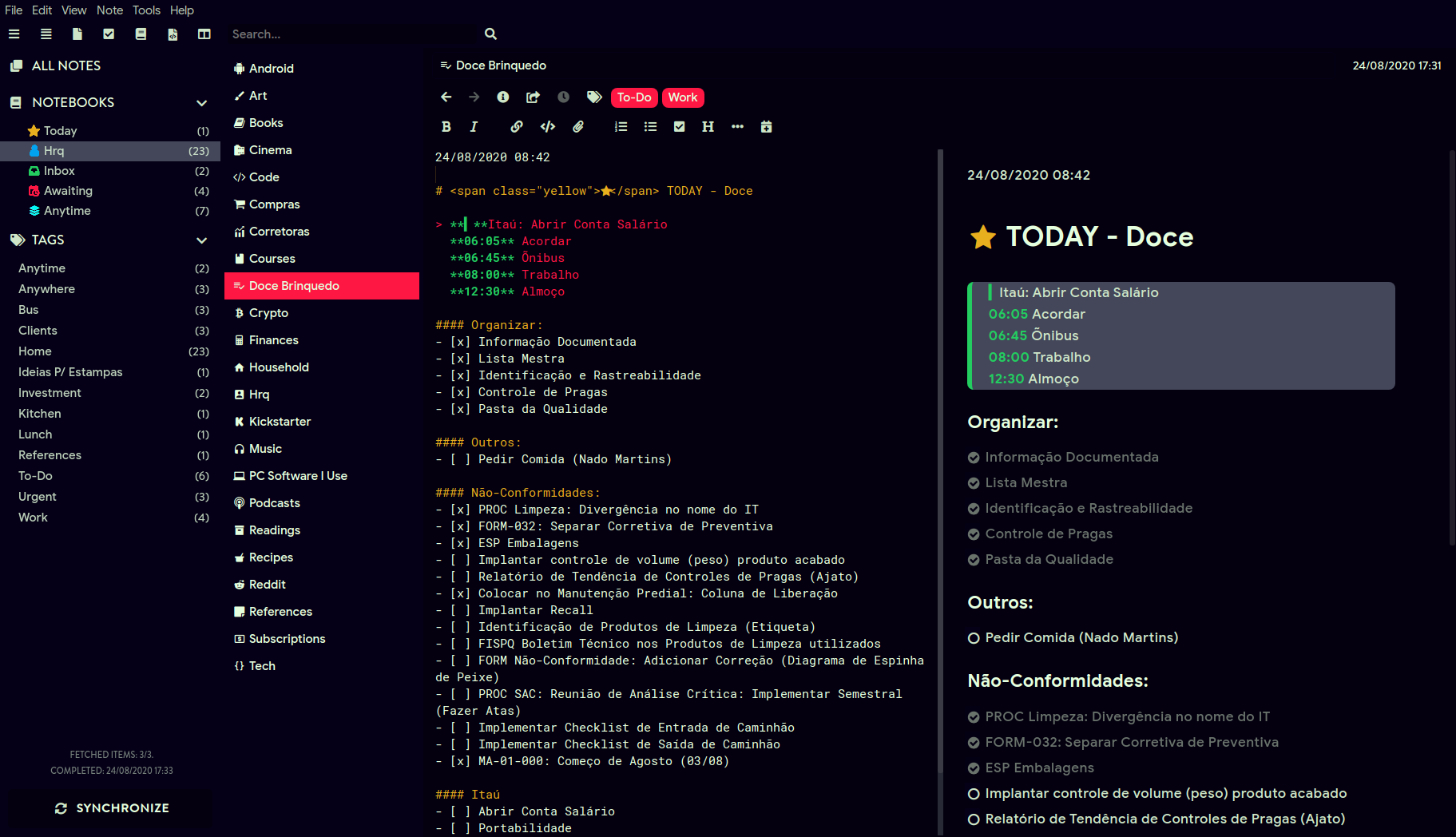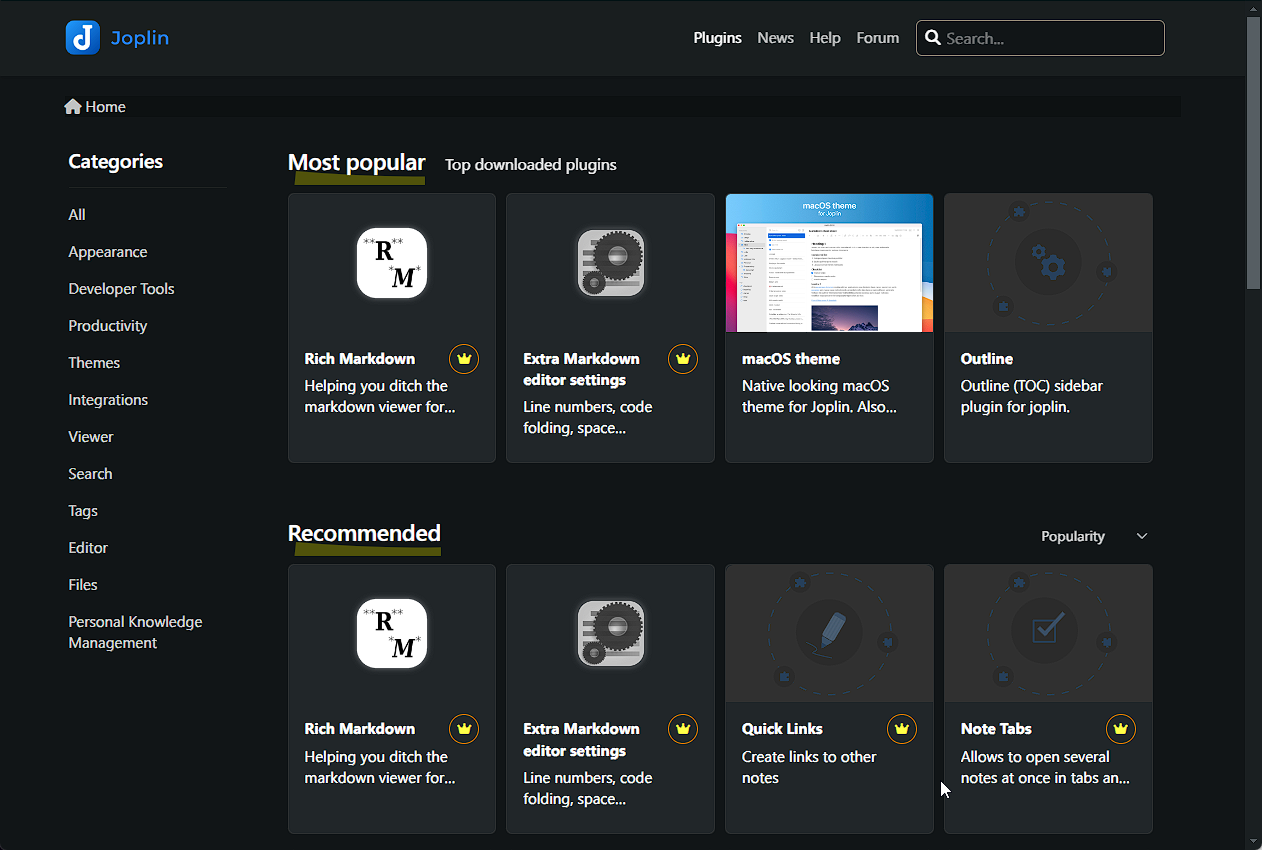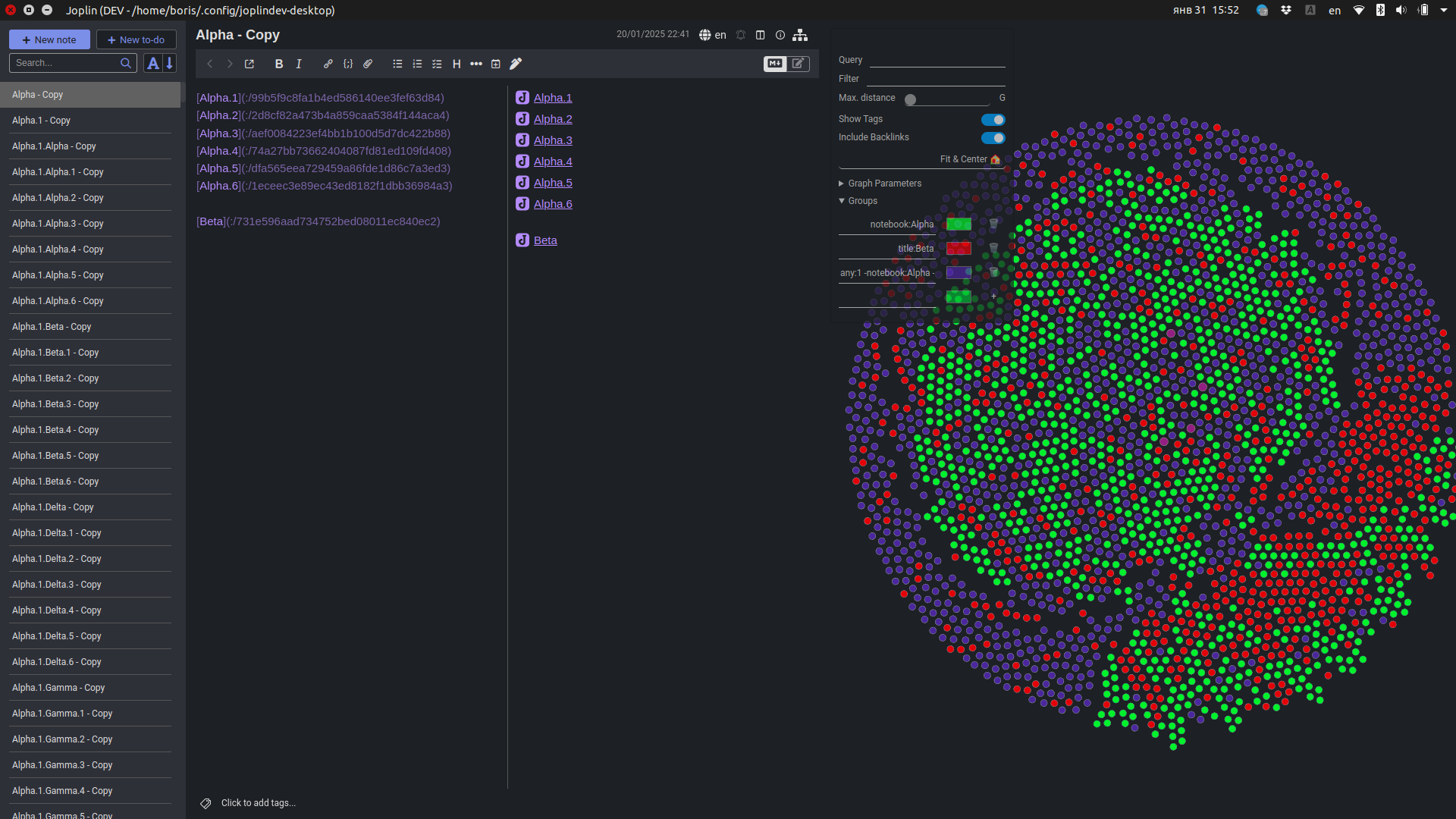Joplin with plugins: The Last Note-Taking App You Will Need

The digital landscape is saturated with note-taking applications, each promising to be the ultimate solution for organizing thoughts, managing projects, and boosting productivity. From the all-encompassing workspace of Notion to the established ecosystem of Evernote, the interconnected graph of Obsidian, and the simplicity of Google Keep, users have a plethora of options. However, amidst these giants, a lesser-known open-source application, Joplin, is quietly amassing power through a unique advantage: its extensive and versatile plugin ecosystem. While often positioned as an underdog, Joplin's ability to be customized and extended through these community-driven additions allows it to not only compete with but, in many ways, surpass the functionality offered by its more mainstream counterparts.
The core strength of Joplin lies in its adaptability. Unlike some note-taking applications that offer a fixed set of features, Joplin's architecture allows users to selectively enhance its capabilities through plugins. This modular approach provides a significant advantage, enabling individuals to tailor the application precisely to their specific needs and workflows. Instead of being forced to adopt features they don't require, Joplin users can choose from a vast library of extensions that add functionalities ranging from advanced project management tools to specialized academic features. This power of extensibility is Joplin's hidden weapon in its quest to challenge the dominance of the established note-taking giants.
Joplin's Arsenal: Exploring the Plugin Ecosystem
The true potential of Joplin is unlocked by its thriving plugin ecosystem, which currently boasts over 150 extensions. This impressive number is a clear indicator of the active and dedicated community that supports and enhances the application. Installing these plugins is a remarkably user-friendly process. Many plugins can be found and installed directly from within the Joplin application itself through the settings menu. For users who prefer a more hands-on approach or want to explore the latest community contributions, plugins can also be downloaded from platforms like GitHub and installed manually. This dual approach to installation caters to users of all technical skill levels.
The breadth of Joplin's plugin ecosystem is truly remarkable, covering a wide spectrum of functionalities designed to enhance productivity, organization, customization, task management, and integration with other tools. For productivity enhancements, plugins like Note Tabs address a common desire to work with multiple notes simultaneously by introducing a familiar tabbed interface. Rich Markdown elevates the writing experience by offering a more visually appealing and customizable Markdown editor. Navigating long documents becomes easier with the Outline plugin, which provides a sidebar table of contents. Consistent formatting is ensured by the Templates plugin, allowing users to create and reuse predefined note structures. Quick access to frequently used items is provided by the Favorites plugin , while the Quick Links plugin streamlines internal linking between notes, fostering a more interconnected knowledge base.

For users seeking advanced organization capabilities, Joplin offers powerful plugin options. Kanban plugins, such as KanMug and YesYouKan, transform Joplin into a visual task management system, allowing notes to be arranged on customizable boards, similar to Notion's board views or dedicated Kanban applications. To visualize the connections between notes, Graph View plugins like Sepremento's Awesome Graph, Link Graph UI, and Joplin Graph Plugin offer interactive network diagrams, akin to Obsidian's renowned graph view. Enhancing the interconnectedness of notes further, Backlinks plugins like Automatic Backlinks automatically create links from notes that reference the current one, a core feature of Roam Research's approach to knowledge management.
The visual appeal and user experience of Joplin can also be tailored through plugins. The macOS Theme provides a native look and feel for macOS users , while the Extra Markdown editor settings plugin offers fine-grained control over the editing environment. Beyond specific themes, Joplin's core functionality supports the use of custom themes, allowing for deep visual customization.
Task management within Joplin can be significantly enhanced with dedicated plugins. Inline TODO allows embedding to-dos directly within notes and provides a consolidated summary. Metis offers a straightforward task manager based on the portable Todo.txt format. For tracking time spent on tasks, the Time Slip plugin provides a solution integrated directly within notes. Calendar integration is offered by the Joplin Calendar plugin , while the Journal plugin facilitates daily journaling practices. The Agenda plugin provides a dedicated panel displaying upcoming and overdue tasks.
Finally, Joplin's plugin ecosystem extends its reach through integrations with other valuable tools. The Web Clipper browser extension allows users to save web pages and articles as notes directly into Joplin. The Email to Note plugin enables sending emails to a specific address, which are then automatically converted into Joplin notes. For users of the spaced repetition learning tool Anki, the Anki Sync plugin provides bidirectional synchronization. Developers can even integrate Joplin with their coding workflow using the VSCode Integration.
Beyond these core categories, Joplin's plugin repository contains unique and specialized tools that highlight its remarkable flexibility. The Rubi and Furigana Plugin was created to assist users learning Japanese by adding support for ruby characters. The Function Plot Plugin provides the ability to generate mathematical visualizations directly within notes. The Hotfolder plugin automates the process of importing files from a local directory as new notes. The Joplin AI assistant integrates artificial intelligence capabilities for features like related note suggestions. For users who need spreadsheet-like functionality, the JSheets plugin offers a unique solution. Visual thinkers can benefit from the Mindmap Plugin. Lastly, the Automatic Backlinks plugin provides a crucial feature for building interconnected knowledge graphs, a hallmark of applications like Roam Research and Obsidian. These examples demonstrate the platform's capacity to cater to highly specific and diverse user needs.
The Giants and Their Domains: Strengths and Weaknesses of Alternatives
To truly understand how Joplin, empowered by its plugins, can compete, it's essential to examine the strengths and weaknesses of its primary alternatives. Each application offers a distinct set of features and caters to different user preferences.
| Application | Key Strengths | Key Weaknesses |
|---|---|---|
| Notion | Flexibility, databases, project management features, integrations, feature-rich free plan | Steep learning curve, potential for distraction, expensive for teams |
| Evernote | Web clipping, organization, search, integrations, robust note-taking features | Restricted free plan, high pricing, performance issues reported |
| Obsidian | Local-first, Markdown-based, extensive plugin ecosystem, graph view, strong internal linking | Steeper learning curve for non-technical users, less intuitive for basic note-taking, paid sync service |
| Microsoft OneNote | Free, cross-platform, integration with Microsoft ecosystem, inking capabilities, flexible page layout | Can feel bloated, syncing issues reported, less privacy-focused |
| Apple Notes | Free for Apple users, integrated into the ecosystem, simple and fast, secure notes | Limited features compared to others, only available on Apple devices, syncing issues reported |
| Google Keep | Free, simple, cross-platform, quick note-taking, reminders, excellent Google Workspace integration | Limited formatting and organization, no notebooks, basic task management, no dedicated desktop app |
| Roam Research | Bi-directional linking, networked thought, graph view, focus on emergent connections | Expensive, steep learning curve, cloud-based (privacy concerns for some), development concerns |
| Logseq | Free and open-source, local-first, outliner-based, bi-directional linking, flashcards, PDF annotation | Steeper learning curve, less polished than some, mobile apps in beta |
| Craft | Beautiful interface, block-based editor, collaboration features, well-structured documents | Primarily cloud-based, less focus on plain Markdown, can be expensive for individual users after the free tier |
Notion excels as a versatile workspace, offering a highly flexible block-based system that allows users to create custom pages, databases, and project management tools. Its strong collaboration features and integrations make it a popular choice for teams. However, its extensive functionality can be overwhelming for new users, leading to a steep learning curve. The sheer number of options can also be a source of distraction, and the pricing structure can become prohibitive for larger teams.
Evernote, a long-standing player in the note-taking space, offers robust note-taking features with rich formatting options and an excellent web clipper. Its powerful search functionality, including OCR, and good organizational structure with notebooks and tags are key strengths. However, the free plan has become increasingly restrictive, and the paid plans can be quite expensive. Some users have also reported performance issues and a feeling of the application becoming bloated over time.
Obsidian, favored by those building personal knowledge graphs, offers a local-first approach, ensuring data ownership and privacy. Built on Markdown, it provides flexibility and longevity for notes. Its highly customizable nature, thanks to a vast plugin ecosystem and themes, is a major draw. The powerful internal linking with backlinks and a graph view for visualizing connections are core features. However, users unfamiliar with Markdown and the concept of a personal knowledge graph might face a steeper learning curve. While the interface is minimalistic, it might not appeal to all users, and official syncing across devices requires a paid subscription.
Microsoft OneNote, often pre-installed on Windows devices, is free to use and integrates seamlessly with the Microsoft 365 ecosystem. Its flexible page layout allows for freeform note placement, and its strong inking capabilities are excellent for handwritten notes and annotations. However, some users find it can feel bloated with features, and syncing issues across devices are occasionally reported. Compared to some other options, it places less emphasis on privacy.
Apple Notes, free for Apple users, offers deep integration within the Apple ecosystem, providing seamless syncing across devices. Its user interface is simple and intuitive, making it excellent for quick note-taking, and it offers secure notes with Face ID/Touch ID locking. However, compared to more advanced applications, its feature set is limited, and it is only available within the Apple ecosystem. Syncing reliability has also been questioned by some users.
Google Keep stands out for its simplicity and speed in capturing quick notes, lists, and reminders, and it's completely free. Its excellent integration with other Google Workspace apps is a significant advantage for many users. However, it offers very limited formatting options and lacks a hierarchical organization system with notebooks. Its task management capabilities are basic, and it does not have a dedicated desktop application.
Roam Research has pioneered the concept of bi-directional linking, allowing users to create highly interconnected knowledge networks. Its graph view provides a unique way to visualize the relationships between notes, and it focuses on networked thought and discovering emergent connections. However, it is one of the most expensive note-taking applications available and can have a steep learning curve due to its unconventional approach. Its reliance on cloud storage might also be a concern for privacy-conscious users.
Logseq, a free and open-source alternative, offers a local-first approach, prioritizing data privacy. Its outliner-based structure encourages breaking down thoughts into interconnected blocks, and it features strong bi-directional linking and graph view capabilities. It also includes useful features like flashcards and PDF annotation. However, users unfamiliar with outliner workflows might experience a steeper learning curve, and its user interface might feel less polished than some commercial options. The mobile apps are currently in beta.
Craft provides a visually appealing and user-friendly interface with a block-based editor focused on creating well-structured documents. Its strong collaboration features allow for real-time sharing and co-editing of documents. However, it is primarily cloud-based, which might concern users who prefer local storage. It also places less emphasis on plain Markdown editing compared to some other applications and can become expensive for individual users after the free tier.
Plugin Power: Joplin Bridges the Gaps (and Leaps Ahead)
Joplin's plugin ecosystem provides a powerful mechanism to address many of the weaknesses found in these alternative applications and even introduce features that surpass their built-in capabilities.
For project management, Joplin plugins like KanMug and YesYouKan bring robust Kanban board functionality, allowing users to visually manage tasks and projects within their notes. This effectively bridges the gap with applications like Notion that offer similar board views. The flexibility of these Joplin plugins, with customizable columns and the ability to associate notes based on tags or notebook paths , can even offer a more tailored project management experience.
In the realm of task management, Joplin's plugin arsenal goes beyond the basic to-do lists offered by Evernote or OneNote. Inline TODO allows embedding tasks with context , Metis offers a portable Todo.txt-based system , and Time Slip provides integrated time tracking. The addition of calendar and agenda views through plugins like Joplin Calendar and Agenda further enhances Joplin's ability to manage tasks effectively, potentially exceeding the built-in features of many competitors.

For knowledge organization, Joplin's graph view plugins (Sepremento's Awesome Graph, Link Graph UI, Joplin Graph Plugin) provide a visual exploration of interconnected notes, directly mirroring a key strength of Obsidian. The Automatic Backlinks plugin implements Roam Research's innovative bi-directional linking system, fostering a highly connected personal knowledge base. These plugins empower Joplin users to build sophisticated knowledge networks with visual exploration capabilities similar to dedicated tools.
While Joplin Cloud offers collaboration features, the plugin ecosystem is still evolving in this area. However, the ability to share notes via links and export in various formats provides workarounds for collaborative editing using other platforms.
Voices from the Community: User Reviews and Comparisons
User reviews and community discussions provide valuable real-world perspectives on Joplin's capabilities. Many users appreciate Joplin's open-source nature, giving them control over their data. The local storage option is a significant advantage for privacy-conscious individuals. The support for Markdown is also a key draw for many. The power of Joplin's plugins is frequently cited as a major strength, allowing users to tailor the application to their specific needs. Users report successfully implementing features like note tabs and graph views through plugins, effectively addressing feature gaps with other applications.
Some users note that Joplin's user interface can feel less polished compared to some alternatives. However, the availability of themes, such as the macOS theme, allows for visual customization. While the mobile app is sometimes mentioned as having limitations, it still provides essential functionality for on-the-go access. The initial learning curve of Markdown is also a point of feedback for some new users. Overall, the community sentiment suggests that while Joplin might have some areas for improvement, its plugin ecosystem is a powerful tool that allows users to overcome many of these limitations and create a highly customized and effective note-taking solution. The open-source nature and active community foster a sense of continuous improvement and shared ownership of the application.
The Freedom of Choice: Joplin's Customization Edge
A key differentiator for Joplin is its commitment to user choice and customization. Unlike more integrated applications like Apple Notes or Google Keep, which offer a fixed set of features, Joplin's plugin-based architecture provides unparalleled flexibility. Users are empowered to build a note-taking system that precisely matches their workflow, selecting only the functionalities they require. This modularity avoids the feature bloat often found in all-in-one solutions and allows for a highly personalized user experience.
Beyond plugins, Joplin offers further avenues for customization. Users can alter the application's visual appearance through custom themes. For those who desire even finer control over styling, the userchrome.css file can be modified to adjust the user interface at a granular level. Additionally, Joplin allows for the customization of keyboard shortcuts, enabling users to optimize their workflow for maximum efficiency. This deep level of customization, extending beyond just features to encompass appearance and behavior, provides Joplin users with a unique level of control over their note-taking environment
Conclusion: Joplin - The Plugin-Powered Contender
In a crowded marketplace of note-taking applications, Joplin stands out as a powerful and adaptable contender, primarily due to its robust and versatile plugin ecosystem. While it might be considered an underdog compared to giants like Notion, Evernote, and Obsidian, Joplin's ability to be tailored to individual needs through these community-driven extensions allows it to effectively compete and, in many instances, surpass the functionality offered by its more established rivals. Its open-source nature, coupled with its deep customization options, provides users with a level of control and flexibility that is often absent in proprietary alternatives. For individuals who value the freedom to shape their tools to their exact specifications, Joplin, with its plugin-powered arsenal, emerges as a compelling and highly capable note-taking solution ready to conquer the digital workspace.


